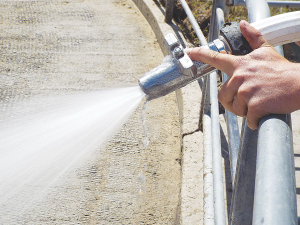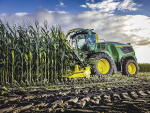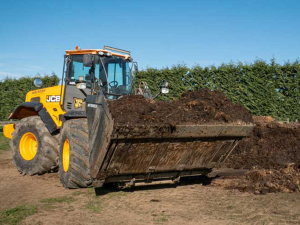At a time when the rising cost of inputs like fuel, transport and fertiliser are putting increased pressure on profitability, smart farmers are realising that effective use of yard washings, dairy effluent and farm-yard manures can play an important role in replacing inorganic fertiliser.
Rotorua-based effluent and water specialists Numedic have built a range of innovative, high quality and reliable solutions for the sector, along the way developing levels of trust only achieved by operating for more than fifty years in the industry.
Numedic pumps are a popular choice amongst farmers and industrial customers, proving reliable, easy to service and well-built. Planning, operational and service advice is a phone call away.
The latest shore-mounted designs, offered in HS, HT and the progressive-cavity HP versions take away the need for floating platforms. Featuring self-priming and a suction lift to 8m, the range can deal with solids to 35mm, making them ideal for pumping raw effluent from any ponds.
Clever design and attention to detail during manufacturing results in trouble-free operation, with maintenance costs reduced by around 20%, while servicing is simple, meaning less downtime.
Water has always been, and continues to be a hot topic, so its effective use will become a higher priority over time. Dairy farmers will know that washing down yards and dairy sheds post-milking consumes large volumes of water, so the latest nozzle from Numedic could be worth a closer look.
The Hydrofan nozzle delivers a wide, fan-shaped stream of water which uses high impact to shift dirt and debris and most importantly decrease water usage. Manufactured from stainless steel, the units appear to be made to last, incorporate a swivel at the hose tail, and are available in 32 and 38mm sizes to fit existing pipework. One Central Canterbury operation, milking 850 cows through a 54-bail rotary shed, complemented by a 30m diameter collecting yard with an automated backing gate, gives an idea of what savings can be made.
A four-month trial in conjunction with ECAN indicated that the average daily usage around the shed and collecting yard was around 61,000 litres, using wash-down hoses in the milking shed and eight hockey-style nozzles fitted to the backing gate. Switching to Hydrofan nozzles, and reducing the number of nozzles on the backing gate from eight to five improved the cleaning effect without the need for supplementary action, but more importantly, reduced water usage by around 12,000 litres per day, resulting in a saving of 3.2 million litres over a 9-month milking period. Additionally, there was a reduction in electricity costs as the 20% reduction in water use meant less effluent needed be sent to the travelling irrigators.


















